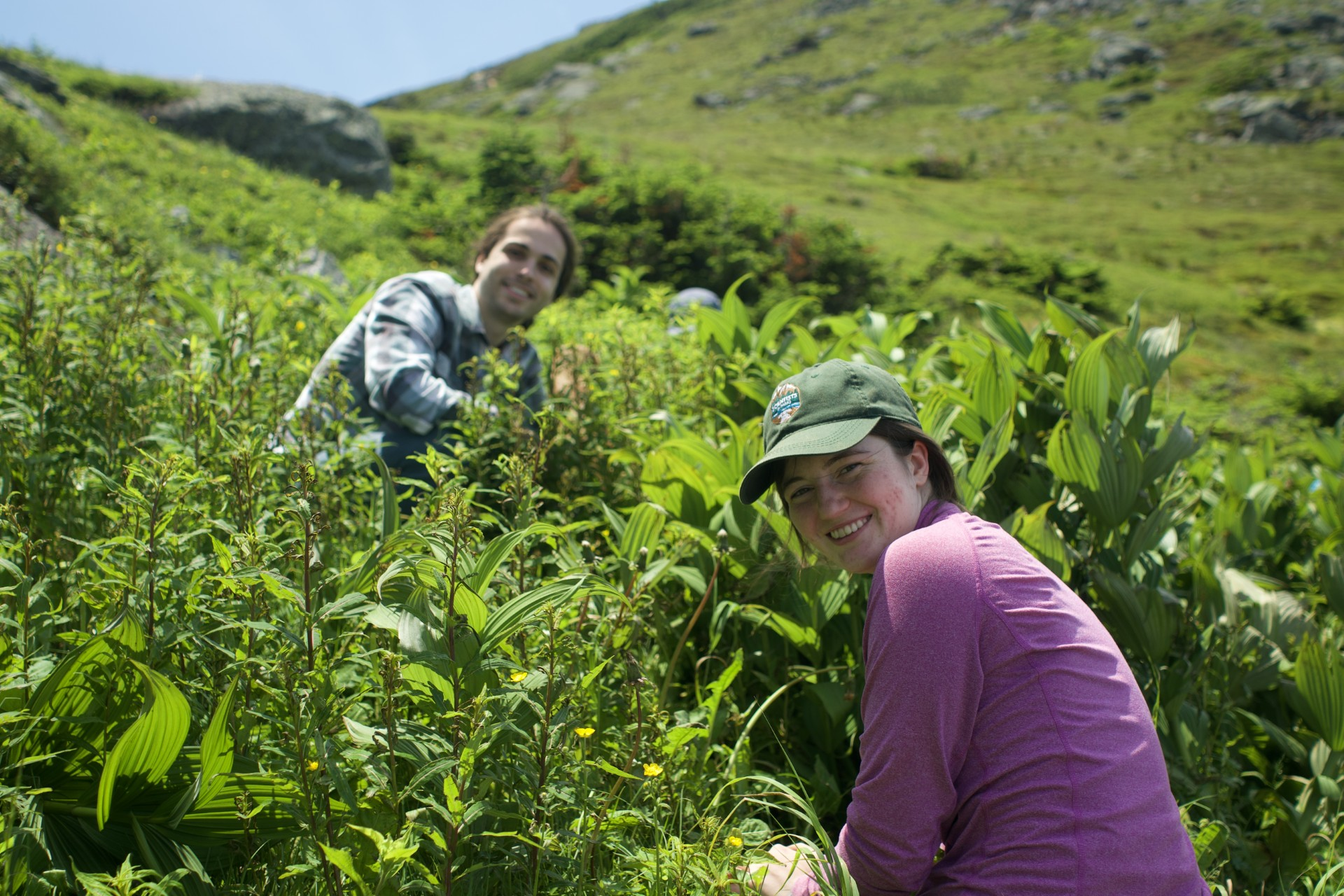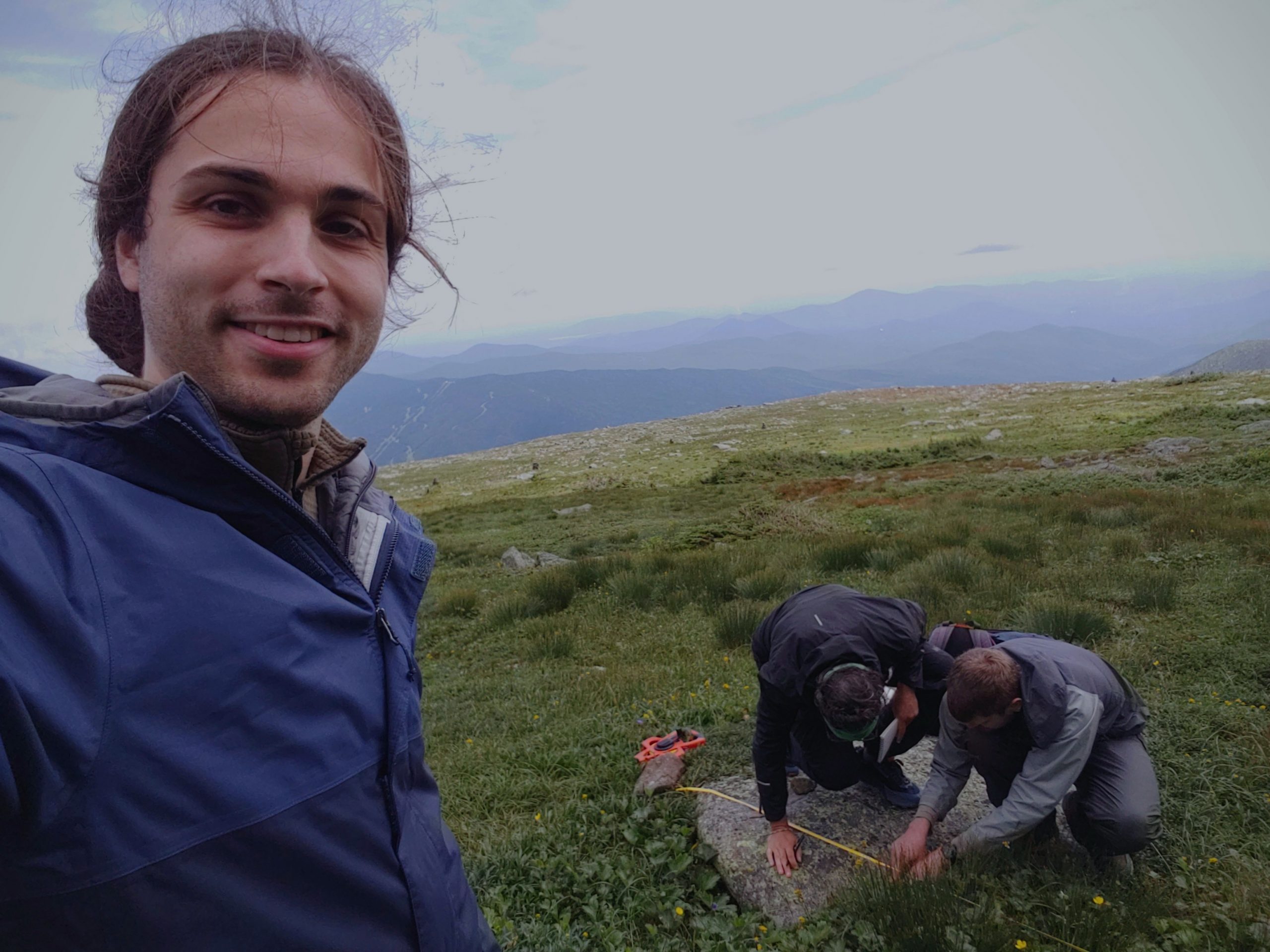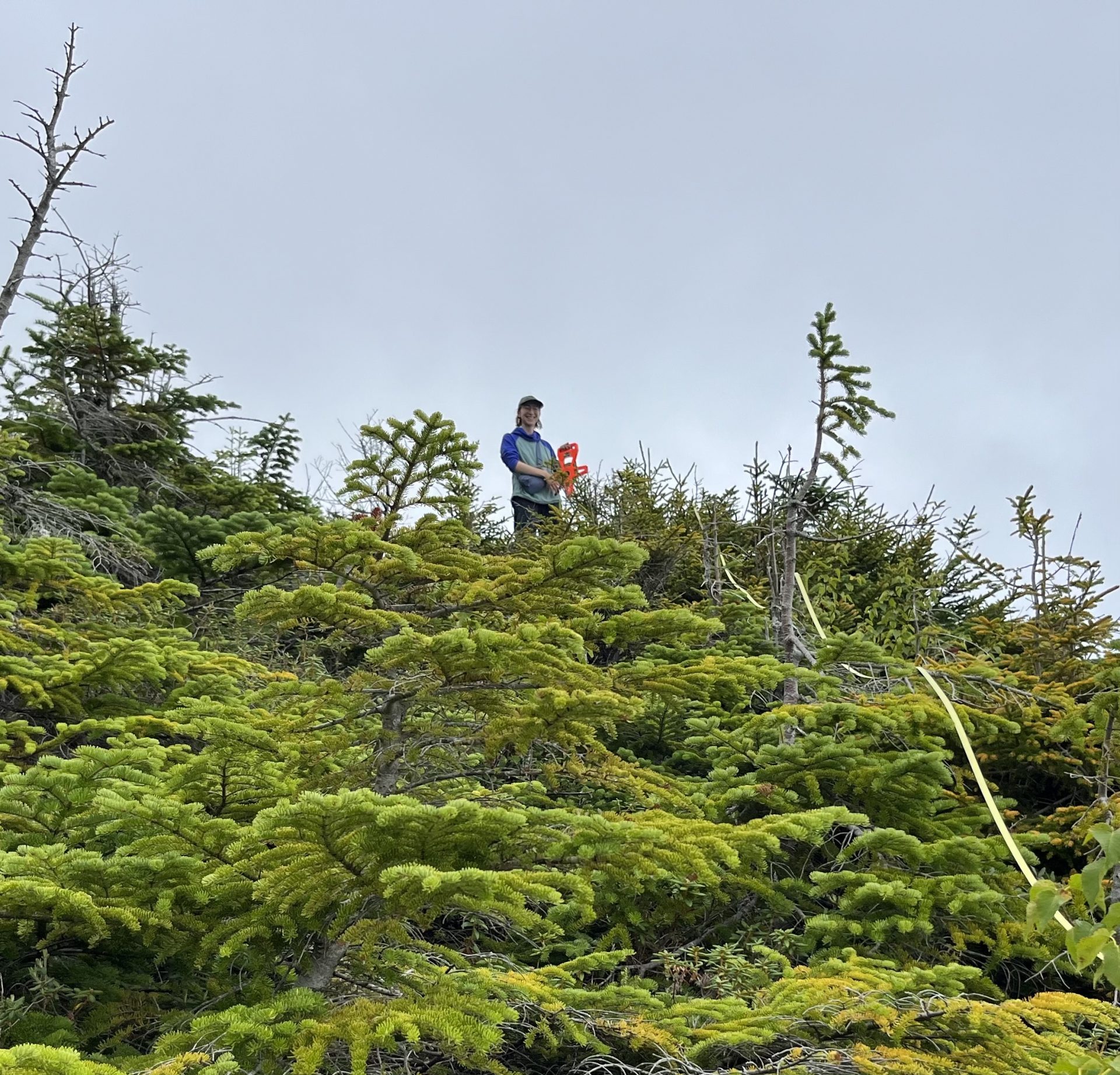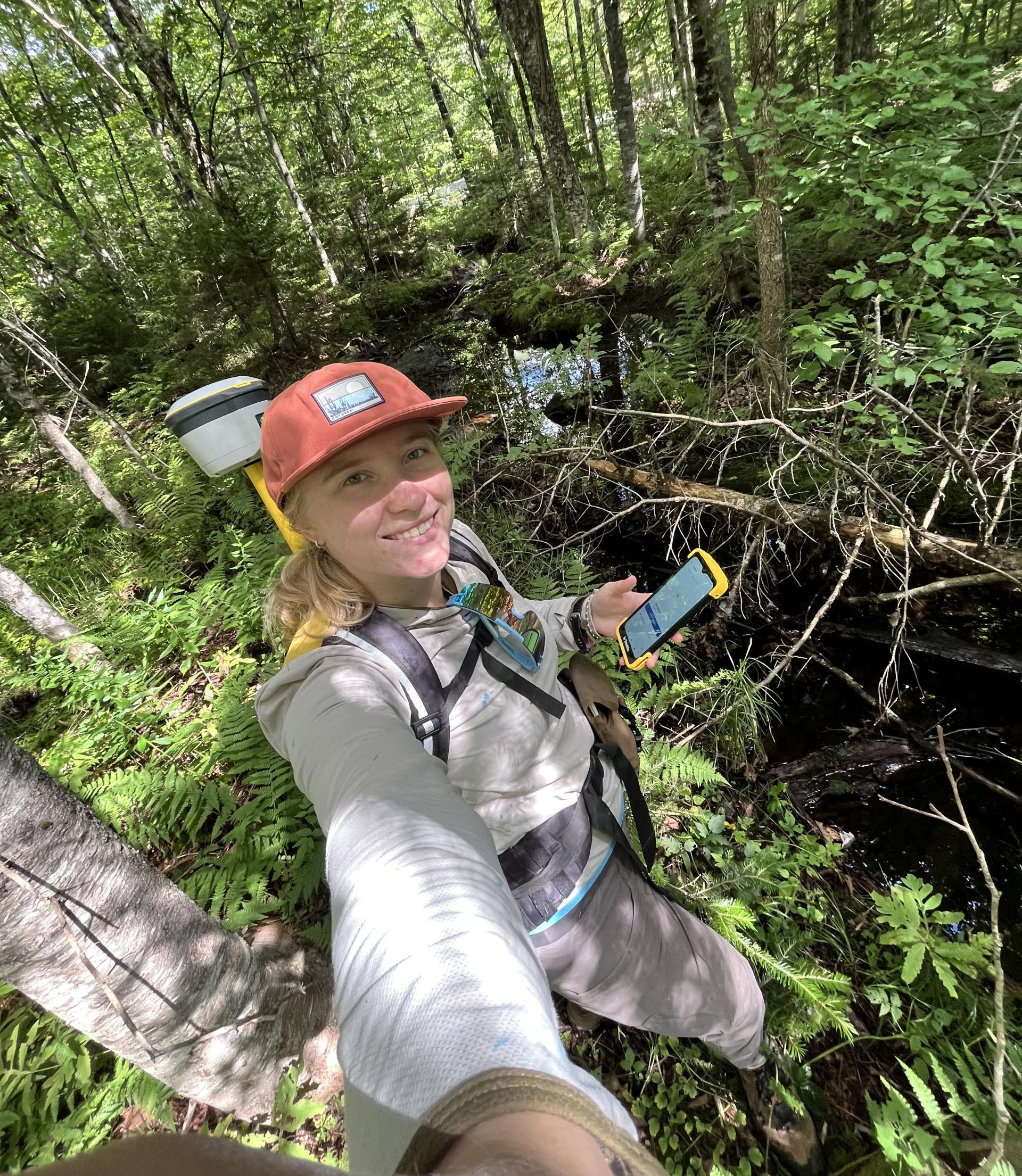The AMC Research team has been hard at work this summer collecting data on alpine zones, mountain plants, air quality, water quality, and more. Summer is a special time for the research team, with new and returning faces working together in New Hampshire and Maine to maximize the field season and learn more about the world around us. Read on to hear about our summer researcher’s experiences this year, and what made this work especially meaningful.
Madelyn Wood - NPS Scientists in the Park Ecological Assistant
This summer I worked as an ecological assistant with the Appalachian Mountain Club through the National Park Service’s Scientists in Parks program. I’m passionate about closing the gap between scientists in dedicated research institutions and the communities where research is being done, and AMC gave me the opportunity to do just that.
These past six months, I've taken part in the entire cycle of citizen science research: community outreach and education; data curation and analysis; and disseminating what we've found to the public. The first two steps of that process have long been a part of AMC's mission, and I've been working on the third step--connecting back to the community. Using my skills as a graphic designer and science communicator, I've created easy-to-understand summaries of the data and our research findings. These updates show community scientists the application and importance of their work in a manner that is visually compelling and scientifically valuable.


Madelyn Wood in the field in the White Mountains. Photo courtesy of Parker DePond.
Kyler Phillips - AMC Researcher
As the education coordinator and a naturalist for the AMC, I had the incredible opportunity of sharing what we know about the White Mountain landscape with the public. My own curiosity ended up getting the better of me, and I joined the research team this year because I was excited by the possibility of contributing something new to our understanding of this special place and how we can best protect it for future generations.


Kyler Phillips (left) surveying plants in the alpine garden with Staff Scientist Dr. Jordon Tourville (middle) and Research Assistant Braedon Lineman (right).
I’m currently leading a research initiative assessing the risk posed by climate change to snowbank communities on Mt. Washington. These unique ecological communities form above tree line in areas where blowing snow accumulates, creating deep patches that persist late into the growing season. The unusual conditions created by the late-melting snow drive the formation of a fascinating plant community—the most diverse in the alpine zone—that’s home to beautiful, rare plants and provides important resources for wildlife. There’s conflicting information about how these communities will respond to the loss of winter conditions we’re seeing. We’re trying to pull together what’s known to propose a long-term research and management plan to protect these remarkable communities.
I also contribute to AMC’s long-term monitoring projects through fieldwork. My favorites days this summer were spent supporting Dr. Jordon Tourville’s work resurveying plant communities near the alpine garden to see what changes may have occurred already. Nothing makes you want to protect something more than seeing it with your own eyes.
Rachel Goland - Graduate Student, University of Vermont Field Naturalist Program
I’m a graduate student at the University of Vermont’s Field Naturalist Program, and I’ve been working with AMC this summer on my master’s project. This project, jointly funded by the AMC and the National Phenology Network (USA-NPN), is centered around setting up a series of phenology monitoring plots near the weather stations on the Mount Washington Auto Road. Phenology--the study of the timing of ecological events such as flowering or fruiting--is key to understanding how climate change will affect our ecosystems and for optimizing land management practices. By pairing phenology monitoring with weather stations, it may be possible to gain a deeper understanding of how temperature cues trigger shifts in plants from one stage of life to the next. This summer’s work sets the stage for potential long-term monitoring along the Auto Road by AMC staff and/or volunteer citizen scientists.
It has been an amazing privilege to spend my summer among the mountain flora, getting to know each of the selected focal species from budburst to fruiting. I’m looking forward to analyzing my data in the coming months and reporting back on lessons learned from doing this project. In addition to helping AMC launch a data collection project along the Mount Washington Auto Road, I hope that my work will help inform the development of more phenology monitoring projects along elevational transects in other mountainous regions.


Rachel Goland at work along the Mount Washington Auto Road.
Megan O’Donnell - AMC Lakes Intern
This season I had the opportunity to work as the Lakes of the Clouds Hut Researcher. I started working up at the hut about halfway through the summer season, but the research team was quick to welcome me into both their circle and the larger AMC community. My primary responsibility at the hut has been collecting precipitation, cloud, and stream water samples. I collect clouds and precipitation from each storm to send down to the AMC Lab at Pinkham Notch, and I collaborate with the Base Researcher, Kyler, to sample streams and bodies of water across the Presidential Range on a biweekly basis. In the fall I am continuing my studies toward an undergraduate degree in Physics and Earth & Climate Science, so experience working with data collection has been valuable.
As the Lakes of the Clouds researcher, I contributed to data collection that has been in the works since the implementation of the Clean Air Act. In combination with my research, I had chances to educate hut visitors on my work and its importance. The Lakes research station is set up right along the Crawford Path, so I had many guests stumble upon my work. In addition to answering questions, I led evening programs for hut overnight guests to explain AMC’s work to protect the air quality of the White Mountains.


Anna Gerner in the Maine Woods.
Anna Gerner - Forest Study Intern
I spent this summer as a forest study intern at AMC’s Maine Woods Initiative (MWI). This internship was funded by the Colby College Buck Lab for Climate and Environment. Through it, I worked on a variety of forest management/treatment, lake sampling, stream connectivity, and fish habitat restoration projects. For the forest projects, I helped mark trees for research on different pre-commercial thinning (PCT) treatment plots, as well as property or treatment boundaries. PCT improves the growth of remaining trees and previously shaded-out understory plants. Research into different PCT methods can help create healthier managed forests in the future.
Most of my summer was devoted to stream connectivity and restoration work. A significant goal of MWI is to improve and restore the valuable habitats of brook trout and endangered Atlantic salmon. Much of my field work for stream connectivity included the documentation of stream lengths and stream endpoint locations. Increased accuracy in stream mapping better marks important fish habitats and can aid in prioritizing and promoting restoration projects. I was also able to help in assessing culvert removal and stream restoration projects this summer. We even got to see one of the native Atlantic salmon AMC is working to protect!